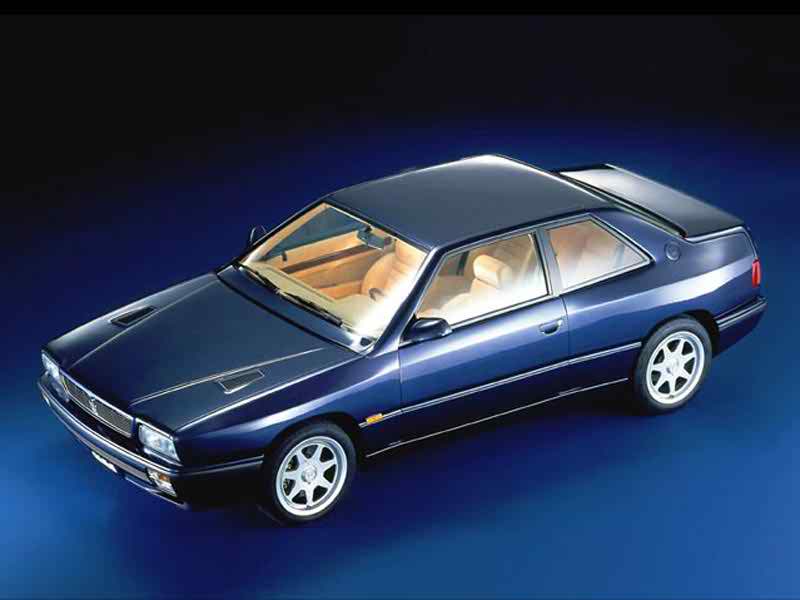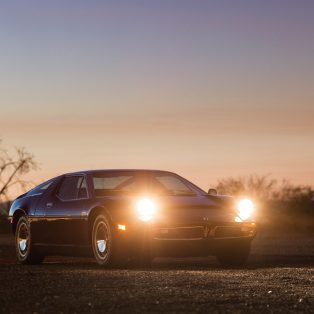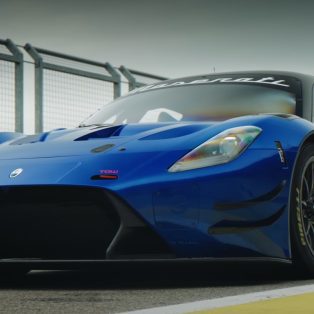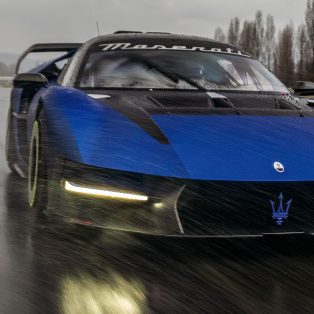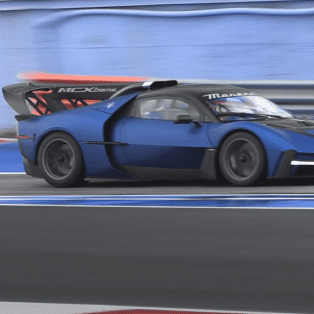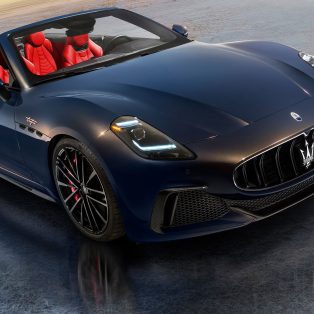1992→1998 Maserati Ghibli
In 1992 Maserati introduced a new model named after its 1967 classic, the Ghibli. Though it aimed at renewing the image of the Biturbo range and linking it back to the Trident’s glorious past, it still used the longer wheelbase chassis (2,514mm) of the Biturbo coupés. The front end followed the lines of the recent range-wide restyling, though the headlights were of a cleaner design. The whole rear section was inspired by the Shamal, but was entirely remodelled with smoother surfacing. Its very high tail improved aerodynamic stability while also increasing luggage space.
Not as wide as the Shamal and still styled by Gandini, the new Ghibli represented a fully mature evolution of the Biturbo’s style and proportions. There were fewer visible changes inside, though the interior was characterised by an ever higher standard of quality and finish.
The aluminium V6 engine also reached the ultimate stages of its development, with twin cam/4-valve heads and a power output of 306 hp from just 2 litres. Coupled to the Getrag 6-speed manual gearbox previously seen in the Shamal, it allowed a final top speed of over 260 km/h. The export model mounted a 2.8-litre version, which received the same 6-speed gearbox from 1995 onwards (see Ghibli 2.8).
Improvements were made to the Ghibli in several steps, most noticeably with the introduction of ABS in 1993 and of a new differential in 1995. Production of the 2.0-litre Ghibli reached a total of 1157 units in over 5 years.
The 2.8
As per previous Biturbo models, the new Ghibli received a higher-capacity engine for export markets, given that the Italian model was limited to just 2.0-litres by way of extremely constraining tax regulations. Maserati had developed a 2.8 litre engine already in 1986 for the 228, and by 1992 this unit was good for 284 hp, guaranteeing superior performance.
Offered with a 5-speed gearbox at first, the Ghibli 2.8 received the same 6-speed Getrag box as its Italian-market sister from 1995 onwards. A 4-speed automatic was added in 1994. In 1996 the engine and exhaust were revised to comply with new EU emissions requirements and the model was renamed Ghibli Granturimo, or Ghibli GT. The general spec varied only very slightly.
Story by Maserati S.p.A.
In Detail
| submitted by | Richard Owen |
| type | Series Production Car |
| production years | 1992 – 1998 |
| built at | Italy |
| production | 1133 |
| engine | 90° V6 |
| position | Front Longitudinal |
| aspiration | Twin IHI Water-Cooled Turbos |
| ignition | Electronic Ignition |
| valvetrain | DOHC, 4 Valves per Cyl |
| fuel feed | Electronic Injection |
| displacement | 1996 cc / 121.8 in³ |
| bore | 82 mm / 3.23 in |
| stroke | 63 mm / 2.48 in |
| compression | 7.6:1 |
| power | 228.2 kw / 306.0 bhp @ 6250 rpm |
| specific output | 153.31 bhp per litre |
| bhp/weight | 232.35 bhp per tonne |
| torque | 372.85 nm / 275.0 ft lbs @ 4250 rpm |
| body / frame | Unitary Steel Monocoque |
| driven wheels | RWD |
| front tires | 205/45 ZR 16 |
| rear tires | 225/45 ZR 16 |
| front brakes | Ventilated Discs w/ABS |
| rear brakes | Ventilated Discs w/ABS |
| front wheels | F 40.6 x 17.8 cm / 16 x 7 in |
| rear wheels | R 40.6 x 20.3 cm / 16 x 8 in |
| steering | Rack & Pinion w/Hydrualic Assist |
| f suspension | MacPherson Struts w/Telescopic Dampers, Coil Springs, Anti-Roll Bar |
| r suspension | Semi-Trailing Arms w/Telescopic Dampers, Coil Springs, Anti-Roll Bar |
| curb weight | 1317 kg / 2900 lbs |
| wheelbase | 2514 mm / 99.0 in |
| front track | 1520 mm / 59.8 in |
| rear track | 1510 mm / 59.4 in |
| length | 4223 mm / 166.3 in |
| width | 1775 mm / 69.9 in |
| height | 1300 mm / 51.2 in |
| transmission | Getrag 6-Speed Manual |
| top speed | ~265 kph / 161.6 mph |
| 0 – 60 mph | ~5.6 seconds |
| fuel capacity | 80 litres or 21.12 gal. |




